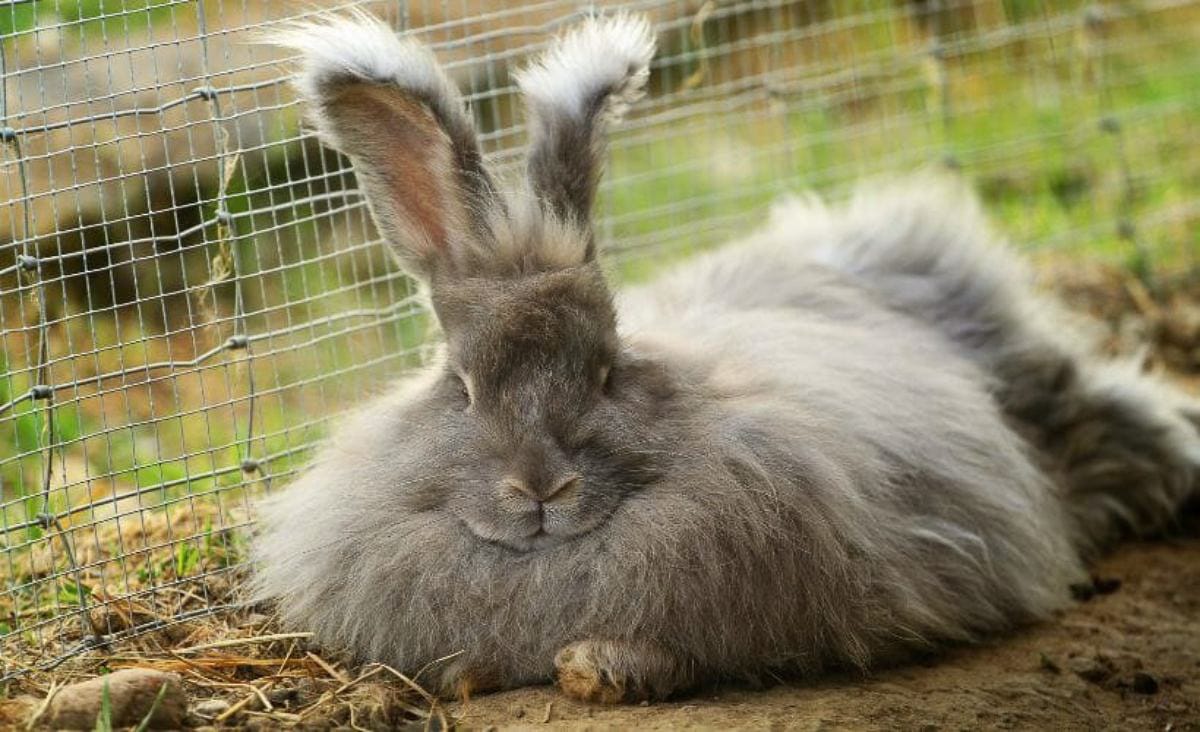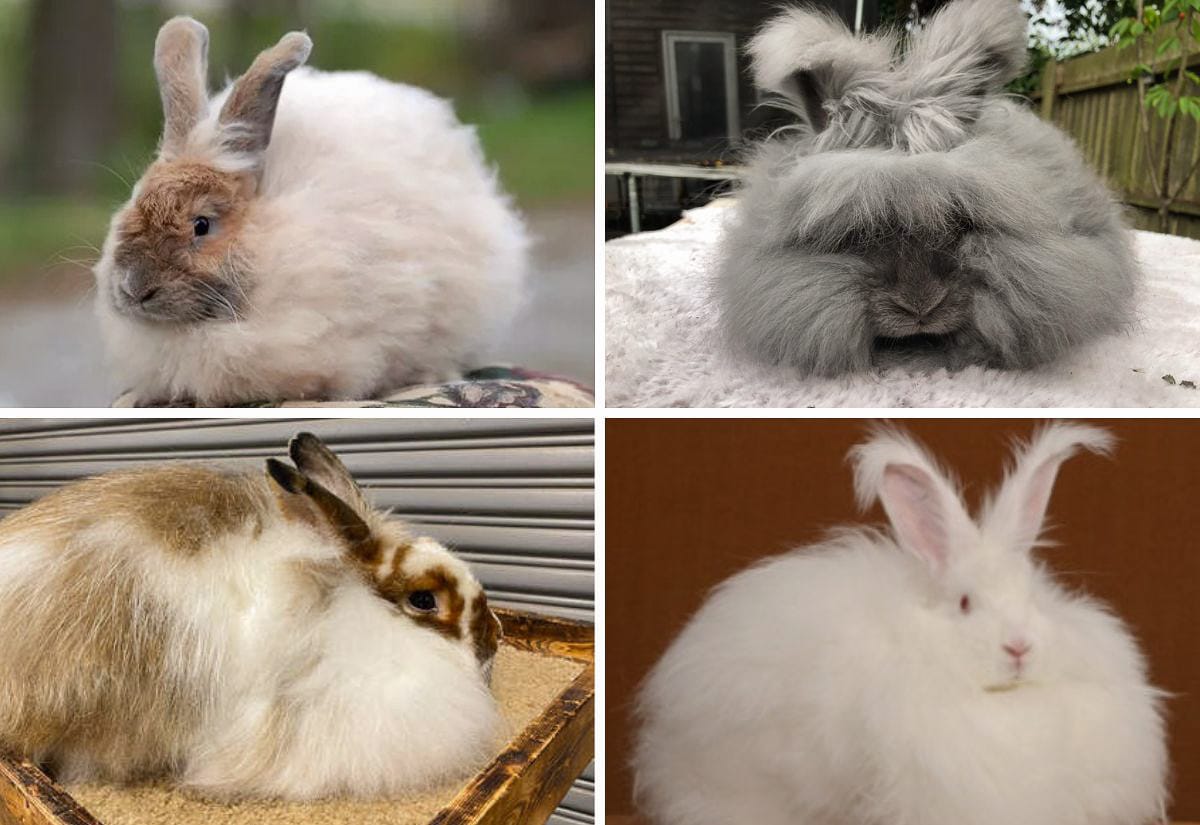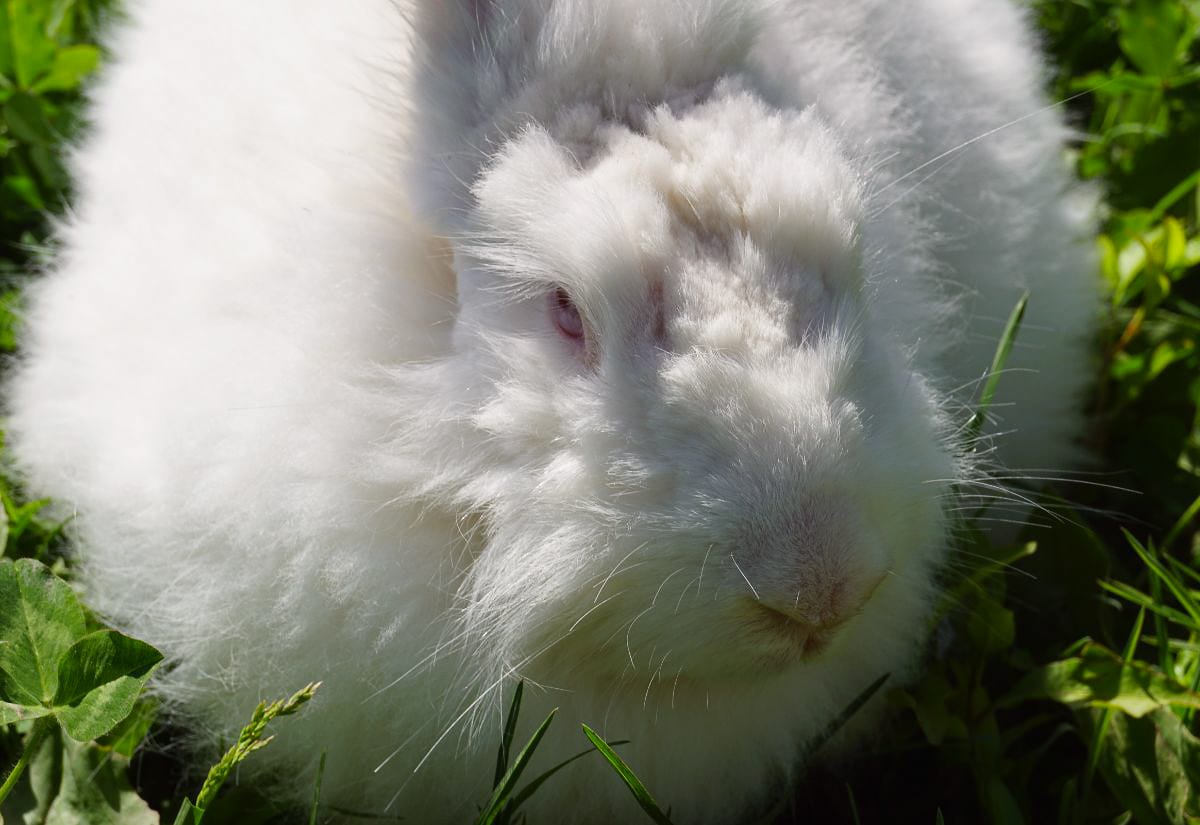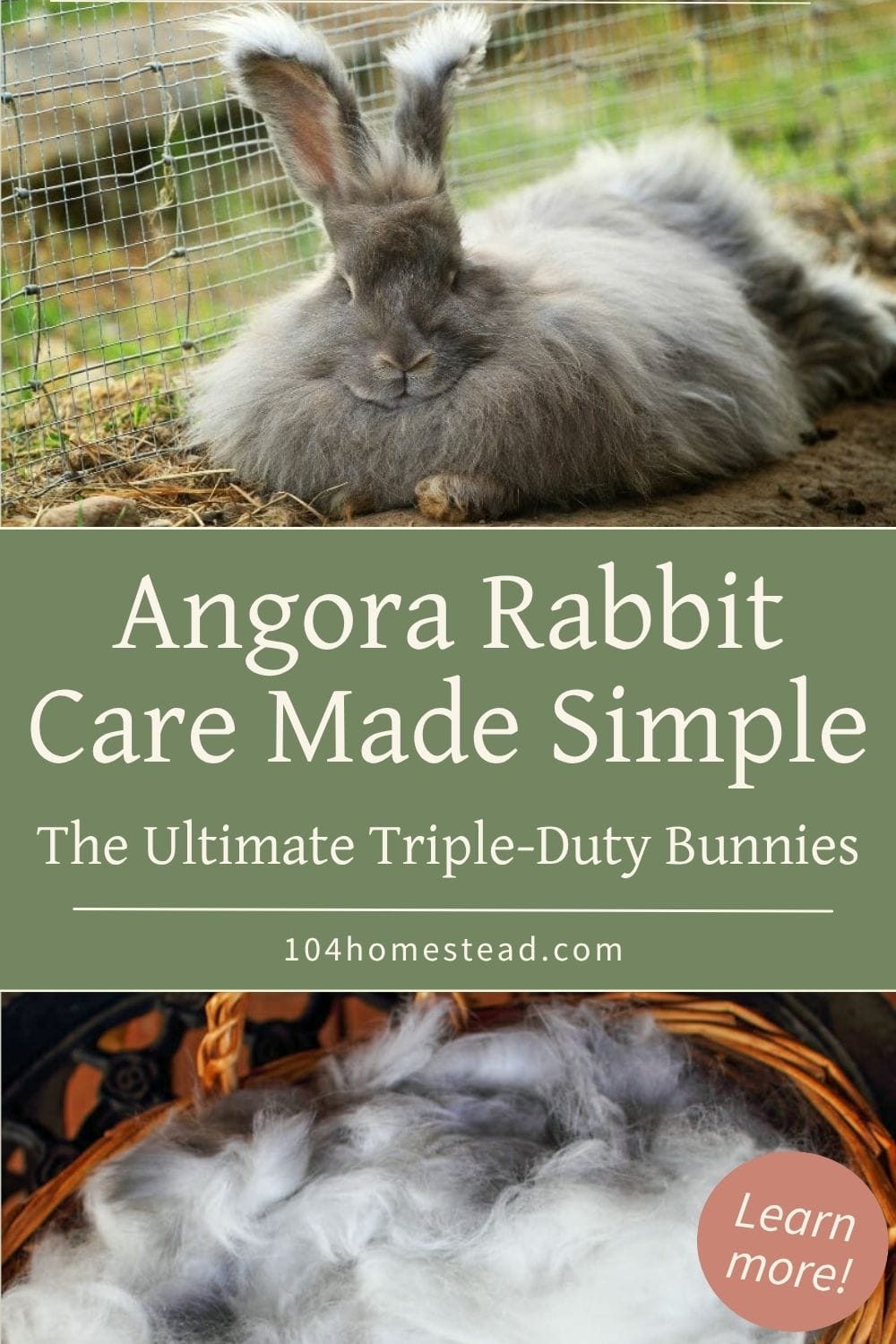Angora Rabbit Care Made Simple: Wool, Meat, and Companionship
Learn how to care for Angora rabbits for fiber, meat, and companionship. A practical guide to grooming, feeding, housing, and more.

I’ll admit it, I first brought French Angoras onto the homestead because of my love for yarn. Knitting, crocheting, spinning… give me a pile of fiber and I’m in my happy place. But Angoras aren’t just fiber animals. They’re what I call “triple-duty” rabbits: they can provide luxurious wool, quality meat, and companionship for the family. That’s what makes them a great fit if you’re trying to squeeze as much as you can out of a small homestead.
Over the years, I’ve raised quite a few rabbits, including Angoras. They’ve taught me plenty (sometimes the hard way) about grooming, shearing, nail care, and feeding. They’ve also proven that with a little planning, one rabbit can wear more than one hat. Soft yarn for me, a cuddle buddy for the kids, and yes, even a meat source when we needed it.
I’ll walk you through the basics of Angora rabbit care and why they belong on a homestead, whether you’re here for the wool, the meat, or just the companionship.
Why Angora Rabbits Belong on the Homestead
On a small homestead, every animal has to earn its keep in more than one way. That’s exactly why Angoras earned their spot here.
- Fiber: Their wool is soft, spins beautifully, and adds up fast. Even one rabbit will give you a pound or two of fiber in a year, which adds up faster than you’d think.
- Meat: They’re not going to rival a New Zealand, but French and Giant Angoras can still pull double-duty and give you both fiber and a fair amount of meat.
- Companionship: They’re pretty laid-back, especially if you handle them often. Mine were happy to sit while the kids fussed over them (honestly, my kids loved those rabbits as much as I did).
If you’re curious but nervous about the workload, start with one or two rabbits.
Types of Angora Rabbits
There are four Angora breeds officially recognized by the American Rabbit Breeders Association (ARBA). Each has its strengths depending on your goals:
English Angora
The smallest (5–6 lbs) and the fluffiest, with wool covering their face and ears. They’re adorable but also the highest-maintenance. Expect lots of brushing.
French Angora
My go-to breed. French Angoras (7.5–9.5 lbs) balance wool production with easier grooming. They’re also one of the better dual-purpose choices for fiber and meat.
Satin Angora
Thanks to a genetic trait, their coats shimmer with a silky luster. Their wool is finer and softer than other breeds, though they produce slightly less of it.
Giant Angora
These big rabbits can reach 10 lbs or more and are the top wool producers. They’re recognized by ARBA only in white, but if you want volume, this is your breed. They’ll also work if meat is something you’re after.

Daily and Weekly Care
Raising Angoras is like rabbits on “hard mode.” Skip grooming for too long and you’ll end up with mats that trap droppings and pee. Not only gross, but hard on their health too.
- Clean cages weekly: Especially in winter when shedding increases. If you’d like to try litter training, make sure to choose a fiber-friendly option. I’ve shared my favorite picks in this guide to litter box material for Angora rabbits that won’t get trapped in fur.
- Brush at least once a week: More if you want spinnable fiber instead of a matted mess.
- Mind the heat: Shear before the hot months hit and give them a cool place to rest. Angoras don’t handle heat well at all.
I like to roll this into a weekly “spa day.” Mine includes brushing, cornstarch dry baths if needed, and nail trims. It’s work, but it also keeps your rabbits tame and used to handling.
Grooming, Shearing, and Wool Harvesting
Grooming, shearing, and wool harvesting are where most of the work (and reward) comes in with Angoras. Their coats are gorgeous, but they don’t stay that way without work. First, let’s talk about the everyday brushing before we get into the bigger jobs like shearing and collecting fiber.
Brushing and Routine Grooming
This is the part most people underestimate about Angoras. Their coats take commitment. Weekly brushing keeps mats away and gives you usable fiber, though some rabbits need attention more often. I set aside a regular grooming day each week, and if a rabbit is especially fluffy, I’ll touch up in between.
Dry Baths Instead of Water
When messes happen, I never use water baths; a sprinkle of cornstarch brushed through works as a safe, stress-free dry bath. Wet coats can chill them dangerously fast, and that’s never a risk worth taking.
Shearing for Fiber
Twice a year (once in spring and again in late summer) I shear each rabbit down and collect around eight ounces of usable wool from an adult. My method is simple: hold the wool about an inch from the body and trim with scissors, discarding any mats that won’t spin well.
There are a few ways to harvest Angora fiber: combing during molts, plucking, or shearing. I prefer shearing because it’s quick, painless, and safe. On a small homestead, it’s easy to harvest wool humanely. It all comes down to regular handling. Rabbits that are used to being brushed and picked up don’t fight grooming or shearing. Some of mine would nod off while I worked, which just goes to show how much easier it is if they’re used to being handled.

Nail Trimming and Spa Day
Long nails can snag in the wool or just make the rabbit plain uncomfortable. Because Angoras tend to pull their own fur, the hair also tangles around their claws, making regular trims even more important. I include nail care as part of our weekly spa day, using small animal clippers to take just the tips off.
If nails have been left too long, you’ll need to trim them gradually every couple of days until they’re back to a safe length. It’s better to go slow than to risk cutting into the quick. And trust me, accidents happen. The first time I nicked a quick, I was glad I had styptic powder close by.
Feeding Angora Rabbits
Since Angoras can pull double duty for fiber and meat, I pay closer attention to what goes in their feed dish. A rabbit producing wool needs plenty of protein, and a rabbit being raised for meat benefits from steady growth.
- Pellets: I feed about ½ cup twice a day. Look for higher-protein pellets if you’re spinning wool.
- Hay: Unlimited hay is best. It prevents wool block (a dangerous digestive issue when they swallow too much fur).
- Fresh greens: Safe herbs or garden scraps in moderation.
Don’t skimp on hay. I learned the hard way after one of mine had wool block. Pellets alone just don’t cut it, no matter how good they are. For a full breakdown of safe options, portion sizes, and treats, you can check out my detailed guide on what to feed a rabbit, from hay to veggies and more.
Housing and Sore Hock Prevention
Because Angoras are heavier than some rabbit breeds, they’re more prone to developing sore hocks (painful sores on the bottoms of their feet). The trick is keeping their housing clean and dry. Anything damp or dirty just makes sore hocks worse. I always make sure to provide a resting board or mat so they’re not constantly standing on wire. A simple piece of scrap wood or even a bit of carpet works well.
If sore spots do develop despite your best efforts, don’t panic. I’ve had good success treating them naturally by applying a small dab of coconut oil two or three times a day. With regular care, the sores usually heal fast and your rabbit will be back to moving around without pain.
What You Might Still Be Wondering About Angoras
Still wondering about Angoras? Here are some of the questions I hear most:
Thinking about adding Angoras to your homestead? Pin this guide so you’ll have all the care tips handy when you’re ready.

Angora rabbits are both beautiful and versatile, which is why they’ve stuck around on my homestead. They can do it all. Give you wool, meat, and companionship. But they also demand more care than your average rabbit. Grooming, shearing, nail trims, and a careful diet are all part of the deal.
If you’re looking for a rabbit that earns its keep in more than one way, Angoras are worth the effort. Start with one or two, get into the rhythm, and see how they fit your homestead. What you end up with might be a skein of handspun yarn, a Sunday roast, or just a ridiculously soft barn buddy. Honestly, all three are pretty great.

I have an angora which is a new experience. It might not make sense in a practical way how much I have spent on my rabbits happiness, but they bring me joy. This newest rabbit is quite the character and while I understand the various positions on this post, I would like to do everything possible to provide a good balance between safety and a natural environment. It sounds to me like Jessica is doing her best to do so as well.
Thanks by the way for posting about soft wood pellets for bedding. I will try that. My rabbit is very tired of me trying to get bedding and hay out of his lovely fur. He also loves to run free and is an expert at escaping. We now have an enclosure outside that he can run in with our company. It’s like recess and he runs free in the house. So, the next time someone asks, “what do you live in a barn?” I would have to truthfully answer, “well yes, I kind of do.”
I am sure there will be people who disagree with any and every opinion any of us might have. I will choose what I am most comfortable with and look to others who feel similarly. I guess I can be a little interested in opinions that are different than my own because I wonder what it might take for me to feel that way. As someone I loved once said, “we all are capable of the same things it just might take different circumstances to get us to a particular point.”
Well, anyway I hope we can learn from each other here and there and try not to be too sure we have all the answers. Questions are often more rewarding in the end.
Thank you for the information. I am fairly new to homesteading and it is nice to compare what I am doing with my 6 English Angora rabbits. These rabbits are the most spoiled rabbits. Mine live in their large cages in my rabbit shed with air conditioning in the summer and heat lamps as needed in the winter. With all of the attention that they get with grooming, they are really considered to be pets, not farm animals. The lovely wool they produce is such a plus with them.
I am sorry you feel that way. Our rabbits are worth approximately $200 each, and to let them “wander in the grass” where they can dig their way out of any run is asking for trouble.
They have escaped their pens before, and it can be a dangerous thing, because they don’t understand the confines of OUR homestead, and the neighborhood dogs can kill them.
They live in a cage so they are safe.
I was thinking the same thing, why do they have to be in a cage with a wire bottom? I get that you want them to be safe, but caged with only a small thing to rest on seems pretty inhumane way to live an entire life. I appreciate your article and posts, but this does bother me as well.
Our rabbits all have resting boards and carpets to get off the cages from. Risking them running off and getting killed is far more inhumane to me than keeping them safe.
It makes me very sad that you keep the rabbits in wire cages
What a crappy life for them, let them be free to wander in grass and burrow and do their natural behaviors
What you may not realize is that Angora’s are not “natural” we breed them to be this way and they can not safely exist in the “real world”. While I let my angora’s out to roam in nature on a nice day under my watchful eye, to allow them to be free and to burrow would be neglectful. The dirt and moisture absorbed by the fur would irritate the skin and sticks and even stiff pieces of grass get caught in the fur and puncture the skin. All this causes open sores that attract flies and ultimately leads to death. By tampering with nature to produce an animal more valuable for our own gain, we have signed a social contract to provide the necessities of life as Jessica has done. Good job Jessica for sharing responsible Angora rabbit procedures, so that the general public can learn more about them.
Since Angora are not “natural” and they are breeded and grown just for monetary gain they deserve just what it’s needed for their purpose; maximize their value, not their happiness.
If their happiness would some how increase their value that would be surely considered, but most of the breeders don’t really care if they smile or cry, if they born, live and die inside a cage. The only regard is how much they can make out of it.
It’s really not a matter of ethic or being inhumane, it’s a fact of saving an investment, it could be a brick or a breeded baby. When it’s made and taken care for the only purpose of income, ethic is how much tax had to be paid on the sale.
In Our farm/factory site we do not have such fancy images, we show what it really is, a place where animal are bred for the maximum gain and the lowest possible expense, we show their cages, the slaughterhouse, how we recycle any kind of sub product, So come and invest in our business.
You are so very wrong. I love my fuzzy bunnies. I take it all you care about is monetary gain?
I make next to nothing off my rabbits. They are pets first.